Considerations for a Therapeutic Approach to Tai Chi

There have been numerous studies done over the last few decades on the therapeutic benefits of Qigong and Tai Chi. If you perform a search on PubMed for Tai Chi you will generate 2,028 abstracts on the therapeutic benefits in just the last decade. Looking across all these studies it becomes obvious there are several factors that contribute to the therapeutic outcome. The most obvious is physical movement, however there are many more that add depth and better health outcomes in the practice of Tai Chi and Qigong.
This range of overall benefits is not necessarily seen in the Gym exercise environment, or many of the ‘western’ forms of exercise which are often hard on the body and its energy reserves. Physical fitness does not necessarily equal health, wellbeing, and longevity. ‘Fitness equals health’ has become the prevailing belief in western culture and unfortunately, it is flawed. Being ‘super’ fit on the outside does not mean you are healthy on the inside.
For those that teach Tai Chi and Qigong, or those that are practitioners, it is worth knowing the factors that contribute to a therapeutic outcome for the benefit of yourself and/or your student’s health. While not an exhaustive list here are some key points for consideration:
Physical Movement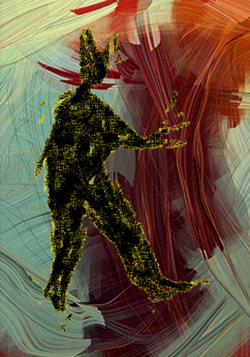 An obvious key ingredient is physical exercise: strengthening and increasing flexibility of the joints, muscles, tendons, and ligaments. Tai Chi is a moderately aerobic exercise like slow walking. The movements mobilize joints and gently stretch muscles and ligaments. Unlike many western types of exercise that stimulate the sympathetic nervous system (flight and fight response), Tai Chi stimulates the parasympathetic nervous system calming and de-stressing the body and mind. Many long-term and intense western-style exercise regimes lead to fatigue, injury, and depletion of Qi (the body’s life force). Constantly pushing your body into a physical stress response beyond healthy adaption is damaging, especially in the long term. These forms of exercise most definitely strengthen the body, but they often tighten and stiffen it. The concept of ‘no pain, no gain’ is a dangerous slippery slope when it comes to longevity, wellbeing, and overall health.
An obvious key ingredient is physical exercise: strengthening and increasing flexibility of the joints, muscles, tendons, and ligaments. Tai Chi is a moderately aerobic exercise like slow walking. The movements mobilize joints and gently stretch muscles and ligaments. Unlike many western types of exercise that stimulate the sympathetic nervous system (flight and fight response), Tai Chi stimulates the parasympathetic nervous system calming and de-stressing the body and mind. Many long-term and intense western-style exercise regimes lead to fatigue, injury, and depletion of Qi (the body’s life force). Constantly pushing your body into a physical stress response beyond healthy adaption is damaging, especially in the long term. These forms of exercise most definitely strengthen the body, but they often tighten and stiffen it. The concept of ‘no pain, no gain’ is a dangerous slippery slope when it comes to longevity, wellbeing, and overall health.
Body Integration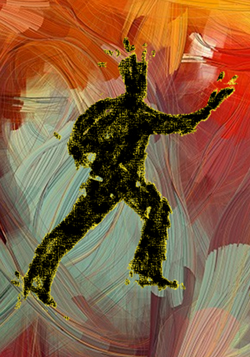 Biomechanical Body integration is needed to create synergy. We are not working the body in pieces like in the gym where we may do a bicep curl or squats. In Tai Chi all body parts work as an integrated whole. When doing your practices, good movement starts beneath the feet, is then steered by the waist, and administered by the hand; but these are not separate, they are one dynamic anatomy change. There is a coordinated integrated flow through the whole body. The whole body is engaged in the movement being performed in Tai Chi. This is one of Yang Cheng Fu’s Ten Important Points of Tai Chi Practice. When first learning Tai Chi the movements are piecemeal and segmented. Focus may initially be on the arms and hands at the expense of the feet. But as the movement becomes known, focus is then on integrating all aspects of the body when in motion.
Biomechanical Body integration is needed to create synergy. We are not working the body in pieces like in the gym where we may do a bicep curl or squats. In Tai Chi all body parts work as an integrated whole. When doing your practices, good movement starts beneath the feet, is then steered by the waist, and administered by the hand; but these are not separate, they are one dynamic anatomy change. There is a coordinated integrated flow through the whole body. The whole body is engaged in the movement being performed in Tai Chi. This is one of Yang Cheng Fu’s Ten Important Points of Tai Chi Practice. When first learning Tai Chi the movements are piecemeal and segmented. Focus may initially be on the arms and hands at the expense of the feet. But as the movement becomes known, focus is then on integrating all aspects of the body when in motion.
Relaxation - Sōng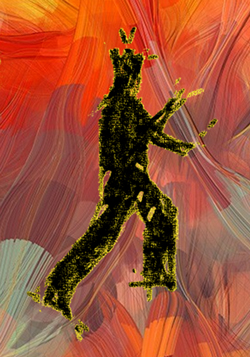 Relaxation of the mind and the body; performing the movements in a relaxed fashion with a calm, relaxed mind. It is referred to as ‘Sōng’ in Chinese, which loosely translates to relaxation. Coming to Tai Chi and Qigong with a mindset of relaxation in the physical movements is important. We are physically moving and exercising the body, but not in a hard, tense fashion as we might when lifting a weight in the gym. Keeping the body relaxed is key from a martial arts perspective and for the dynamic flow of Qi in the body. On a physical level it offers the chance to calm the sympathetic nervous system, thus reducing our stress load and helping to still the mind.
Relaxation of the mind and the body; performing the movements in a relaxed fashion with a calm, relaxed mind. It is referred to as ‘Sōng’ in Chinese, which loosely translates to relaxation. Coming to Tai Chi and Qigong with a mindset of relaxation in the physical movements is important. We are physically moving and exercising the body, but not in a hard, tense fashion as we might when lifting a weight in the gym. Keeping the body relaxed is key from a martial arts perspective and for the dynamic flow of Qi in the body. On a physical level it offers the chance to calm the sympathetic nervous system, thus reducing our stress load and helping to still the mind.
Focused Awareness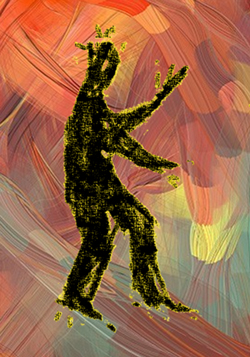 Paying attention or focusing is important as Tai Chi is a mindfulness or body-mind practice. There may be many aspects to a movement, but being able to stay with the Dantian, or keep your awareness in your neck because you were tightening it up as you move is important. It is a sort of vigilance of the body or paying attention to any part of the body that is required. Placing your awareness in the body or body part is an essential ingredient. This makes our Tai Chi practice a moving meditation. It will over time, bring greater body awareness and allow us to focus our attention where we want to as we need it. This becomes important as we deepen our practice, because where our attention is placed is where the Qi will flow. This is what has made Tai Chi such a formidable martial art in the past. It also alludes to the art being called an ‘internal’ martial art as opposed to the external martial arts of Shaolin Kung Fu, Karate and Judo.
Paying attention or focusing is important as Tai Chi is a mindfulness or body-mind practice. There may be many aspects to a movement, but being able to stay with the Dantian, or keep your awareness in your neck because you were tightening it up as you move is important. It is a sort of vigilance of the body or paying attention to any part of the body that is required. Placing your awareness in the body or body part is an essential ingredient. This makes our Tai Chi practice a moving meditation. It will over time, bring greater body awareness and allow us to focus our attention where we want to as we need it. This becomes important as we deepen our practice, because where our attention is placed is where the Qi will flow. This is what has made Tai Chi such a formidable martial art in the past. It also alludes to the art being called an ‘internal’ martial art as opposed to the external martial arts of Shaolin Kung Fu, Karate and Judo.
Visualization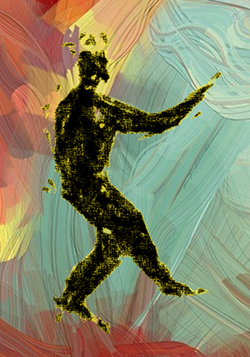 Visualization and imagery; imagining you have roots like a tree to make your Tai Chi stance more ‘rooted’ and stable. However, imagining you are on cold ice with bare feet would destabilize your ‘root’. Because the mind and body are connected, visualization has an impact on your body or physicality, especially when trained. We have all heard elite athletes speak of visualizing their win or performance. The practice of standing in a horse stance for long periods and visualizing roots extending from the Yǒng quán (Kidney 1) point on your feet deep into the earth has been a mainstay of traditional practice. It creates a solid connection with the ground and makes it much more difficult for an opponent to uproot you or push you out of balance. On a practical daily level this makes our footing more stable, helping to prevent falls, particularly with the elderly.
Visualization and imagery; imagining you have roots like a tree to make your Tai Chi stance more ‘rooted’ and stable. However, imagining you are on cold ice with bare feet would destabilize your ‘root’. Because the mind and body are connected, visualization has an impact on your body or physicality, especially when trained. We have all heard elite athletes speak of visualizing their win or performance. The practice of standing in a horse stance for long periods and visualizing roots extending from the Yǒng quán (Kidney 1) point on your feet deep into the earth has been a mainstay of traditional practice. It creates a solid connection with the ground and makes it much more difficult for an opponent to uproot you or push you out of balance. On a practical daily level this makes our footing more stable, helping to prevent falls, particularly with the elderly.
Breathing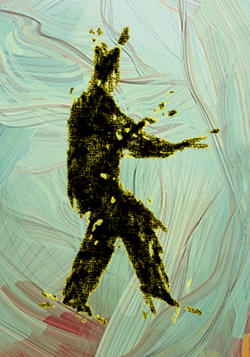 Breathing is vitally important. Just to simply not stop breathing is good when you first start out in your practice. But combining breathing with movement develops Qi flow and power. Relaxed, deep abdominal breathing is encouraged in both Tai Chi and Qigong. This has numerous health benefits from oxygenating the body, to massaging the internal organs and calming the nervous system. Breathing in concert with your movements make them more powerful in Tai Chi and increases the healing benefits of your Qigong. Most westerners have some level of breathing dysfunction due to lifestyle and stress. Chronic stress causes tightening of all the muscles of inspiration, not only the diaphragm but other muscles of the upper torso connected to breathing. This tends to make us breath in the upper part of the lung, and to breathe more rapidly. Slowing down and focusing on deep, relaxed abdominal beathing helps counter this. It initiates a parasympathetic nervous system response, taking us out of sympathetic overdrive (fight and flight). It is integral to both Tai Chi and Qigong.
Breathing is vitally important. Just to simply not stop breathing is good when you first start out in your practice. But combining breathing with movement develops Qi flow and power. Relaxed, deep abdominal breathing is encouraged in both Tai Chi and Qigong. This has numerous health benefits from oxygenating the body, to massaging the internal organs and calming the nervous system. Breathing in concert with your movements make them more powerful in Tai Chi and increases the healing benefits of your Qigong. Most westerners have some level of breathing dysfunction due to lifestyle and stress. Chronic stress causes tightening of all the muscles of inspiration, not only the diaphragm but other muscles of the upper torso connected to breathing. This tends to make us breath in the upper part of the lung, and to breathe more rapidly. Slowing down and focusing on deep, relaxed abdominal beathing helps counter this. It initiates a parasympathetic nervous system response, taking us out of sympathetic overdrive (fight and flight). It is integral to both Tai Chi and Qigong.
Psychosocial Interaction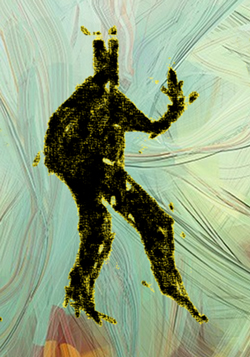 Psychosocial interaction includes having a teacher to coach, teach, motivate, and inspire, along with the benefit of a group in learning and social interactions. All this creates a positive effect for learning and improving your health as a common goal of group practice. A feeling of being connected to other people with the same pursuit has benefit both psychologically and emotionally. Having a teacher to lead you, learning a routine, and then having the sense of accomplishment when you get “it” produces beneficial neurotransmitters in the brain leading to greater mental wellbeing and happiness. This of course does not negate the benefit of individual solo practice as well. Having other people around you when learning a routine helps you retain sequences better, providing more visual cues to pattern off.
Psychosocial interaction includes having a teacher to coach, teach, motivate, and inspire, along with the benefit of a group in learning and social interactions. All this creates a positive effect for learning and improving your health as a common goal of group practice. A feeling of being connected to other people with the same pursuit has benefit both psychologically and emotionally. Having a teacher to lead you, learning a routine, and then having the sense of accomplishment when you get “it” produces beneficial neurotransmitters in the brain leading to greater mental wellbeing and happiness. This of course does not negate the benefit of individual solo practice as well. Having other people around you when learning a routine helps you retain sequences better, providing more visual cues to pattern off.
Embodied Philosophy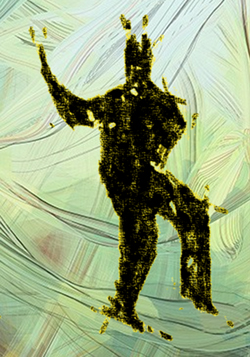 The essential principles of Tai Chi are based on the ancient Chinese philosophies of The Classics, Taoism, Buddhism and Neo-Confucianism, which stress the natural balance in all things and the need for living in spiritual and physical accord with the patterns of nature. In the west, especially in the gym setting we are encouraged to give it 110%, really go for it! What does not kill you makes you stronger! In the eastern practices of Tai Chi and Qigong a little less can often be a lot more. The eastern philosophies of “go with the flow”, “do not overexert”, “only use 70%”, “do not over think it”, “do everything in a balanced, harmonious way”, reflect those principles. These are not just trivial instructions or a thought process. These things can be experienced in the body and reflected in the quality of your movements. Coming to your Tai Chi and embodying flow, balance, and equanimity gives your practice greater depth and leads to deeper healing and wellbeing. How you meet these things becomes a collaboration with yourself.
The essential principles of Tai Chi are based on the ancient Chinese philosophies of The Classics, Taoism, Buddhism and Neo-Confucianism, which stress the natural balance in all things and the need for living in spiritual and physical accord with the patterns of nature. In the west, especially in the gym setting we are encouraged to give it 110%, really go for it! What does not kill you makes you stronger! In the eastern practices of Tai Chi and Qigong a little less can often be a lot more. The eastern philosophies of “go with the flow”, “do not overexert”, “only use 70%”, “do not over think it”, “do everything in a balanced, harmonious way”, reflect those principles. These are not just trivial instructions or a thought process. These things can be experienced in the body and reflected in the quality of your movements. Coming to your Tai Chi and embodying flow, balance, and equanimity gives your practice greater depth and leads to deeper healing and wellbeing. How you meet these things becomes a collaboration with yourself.
Many of the studies listed in PubMed are small scale. Not all are definitive, but most give an indication that Tai Chi has major benefits in achieving therapeutic outcomes. Harvard Medical School has done longer term and more in-depth studies on the benefits of Tai Chi in a broad spectrum of health-related issues, both physical and mental.
Anecdotally we see the health benefits conferred to people with significant health issues such as depression, Parkinson’s, arthritis and more, occurring in the class situation. In many cases the main change in lifestyle has been commencing the practice of Tai Chi and Qigong.
The above considerations should be actively employed not just as a purely intellectual pursuit. The purpose of this discussion is to give you a more Holistic approach to your Tai Chi and a greater opportunity to heal your health issues and prevent future ones.
Article by Sifu Peter Eves - November 2020
Recent Posts
- Caring for the Self
- Eight Energies, Five Steps, Two Weeks, and a Lifetime of Practice: Training at Beijing Sports University 2025
- Qigong: A Guide to Understanding the Many Paths of Energy Cultivation
- The Year of the Wood Snake and Tai Chi/Qigong: A Harmonious Interplay
- An Introduction to the Six Harmonies in Taijiquan
- Tai Chi Lessons from a Broken Piano: Work with What You Have
- Tai Chi and Cage Fighting: Zhang WeiLi, China’s UFC Champion
- Studio 14 - The Launch of a Dream
- It’s The Year of the Wood Dragon – A Great Time to Dream Big
- The 21st WTQA Festival 2023 - My First Wushu Tai Chi Qigong Festival
Tags
Archive
- December 2025 (1)
- November 2025 (1)
- March 2025 (1)
- January 2025 (1)
- November 2024 (1)
- September 2024 (1)
- July 2024 (1)
- January 2024 (2)
- December 2023 (1)
- September 2023 (1)
- June 2023 (2)
- April 2023 (1)
- January 2023 (2)
- November 2022 (1)
- August 2022 (1)
- March 2022 (1)
- January 2022 (2)
- September 2021 (1)
- May 2021 (1)
- March 2021 (1)
- February 2021 (2)
- January 2021 (1)
- December 2020 (1)
- August 2020 (1)
- April 2020 (1)
- January 2020 (1)
- October 2019 (1)
- May 2019 (2)
- April 2019 (1)
- March 2019 (3)
- February 2019 (2)
- January 2019 (3)
- December 2018 (2)
- October 2018 (1)
- July 2018 (1)
- June 2018 (1)
- April 2018 (2)
- February 2018 (1)
- October 2017 (1)
- September 2017 (1)
- April 2017 (2)
- March 2017 (1)
- January 2017 (2)
- December 2016 (2)
- October 2016 (1)
- September 2016 (1)
- August 2016 (1)
- July 2016 (2)
- June 2016 (21)
